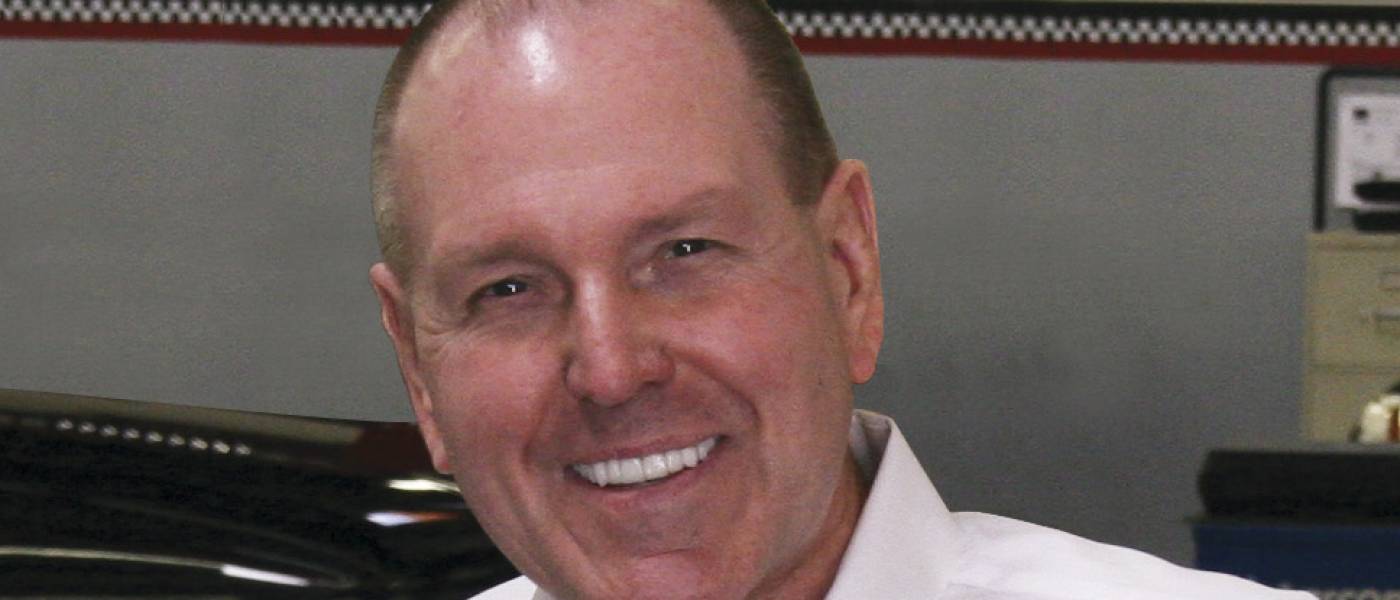Safe At Any Speed
Truck Trend November 2007
When I started in 1958, all engine tuning was a mechanical enterprise. Today, especially in the diesel world, many tuners still rely on retro technology, but I’m not one of them.
When I started in 1958, all engine tuning was a mechanical enterprise. Advance curve, point float, coil output, ignition timing, jet size—these were the bench-race topics. Today, especially in the diesel world, many tuners still rely on this type of retro technology, but I’m not one of them.
In 1975, Volvo hired us to design and build a prototype turbocharged automobile based on its 242. At the time, we were fully engaged in selling our twin-turbo Gale Banks Marine Engines worldwide—why would I want to screw with a foreign car?
Well, Volvo and Bosch had developed the world’s first production car with an 02 sensing, closed loop, electronic engine management system. I’m a futurist, and I wanted to get my grimy hands on that technology. So years before any American car companies, we turbo freaks built the world’s first turbocharged engine utilizing closed-loop electronic control technology. The prototype Volvo was much faster when we were done, but it was still…ugly.
In 1981, my turbo freakiness resulted in the first Sidewinder diesel-pickup turbo system, and that marked the beginning of the diesel-pickup performance industry. Our turbo system forced more air in, made more power. and cleaned up the smoke. But the stock trucks still smoked and the environmentalists went nuts. That forced new emissions laws, which stimulated a watershed of diesel-engine development. The result is the computer-controlled turbocharged diesels of today and a huge market in programmers and inline tuners that add fuel and power for all us torque junkies.
But here is a fueling limit, and going beyond that causes exhaust smoke and the engine-killing heat that accompanies it. To keep your engine safe, proper air/fuel ratio provided by additional cold airflow to the turbo, higher turbo boost, a larger intercooler and ducting, plus a free-flowing exhaust system are required.
However, if you want more power, don’t have the budget to improve engine airflow, and want to run your diesel more than a quarter mile under heavy throttle, you need a device that automatically prevents over-temp damage to your engine. You have a choice of programmers or inline tuners. A programmer will flash a new program, but can’t protect the engine by backing down the fuel while driving. Inline tuners are permanently installed in the vehicle and can protect the engine. Therefore, I consider programmers as an entry-level product and inline tuners the preferred (but more expensive) solution.
Even after making that choice, you still have to be careful. Most inline tuners monitor excess exhaust temperature and reduce fuel delivery to prevent engine damage-but what about the additional power that’s possibly damaging the powertrain? Try to find a tuner that can help with that as well.
A power system should honor the host vehicle. The goal should be to find the limits of the engine and powertrain and build a product that stays well under those limits. That way you can prevent warranty issues up front. In the SEMA boardroom, we frequently discuss warranty issues, and we want customers to be treated fairly. One way to do that is to keep them out of the dealership in the first place. When we engineered our OttoMind work-truck tuners and Six-Gun sport and racing tuners, we built in drivetrain safety limits.
To avoid warranty issues. look for the following:
- Exhaust-gas temperature monitoring: Constantly measures EGT and limits fuel delivery if temperature becomes unsafe.
- Torque converter lockup clutch protection: Softens power momentarily during lockup, protecting the converter clutch.
- Shift-slippage prevention: momentarily reduces power to the stock level to protect clutch packs on each shift.
- In-gear slip protection: Prevents transmission damage by reducing fuel delivery if transmission slip is detected at any time. over-speed protection: A safeguard that prevents turbo failure (usually happens at high altitude). This is accomplished during calibration.
- Coolant-temp monitoring: Automatically reduces fuel delivery if coolant overheats, allowing the engine to run at a safe temperature.
- Oil-pressure monitoring: Automatically reduces fuel delivery if low oil pressure is detected.
- Oil-temp monitoring: On-screen visual and audible warnings.
- Cold engine protection: Gradually allows added power as the engine warms preventing damage due to cold components and lubricants.
- Tuner self diagnostics: Tuner constantly runs tests on Itself and reports any problems.
- Automatic tuner bypass: In case of a tuner failure, it takes it out of the ECM wiring system, and the engine continues to run.
The market seems to be going the way of cheaper programmers. If you add significant power with one, you better buy an exhaust-temp gauge and watch it like a hawk when you’re in the throttle. And be careful about pulling that big toy hauler. Personally, I’d run en inline tuner and the proper matching airflow equipment. Then your tuner won’t back down the power lust when you want it. For safety’s sake, consider the entire package.
IN THIS ISSUE: For the last 50 years, futurist, innovator, engineer, inventor, entrepreneur and gearhead, Gale Banks has pioneered new automotive markets, set records and won championships world wide both marine and automotive. His aftermarket parts company is known by hard-core enthusiasts in the diesel, towing, and RV spheres. And he recently rebuilt one of Jay Leno’s newest toys.

